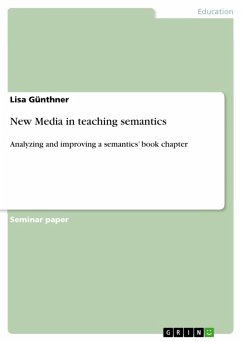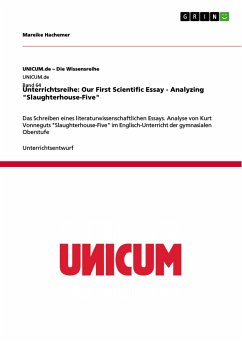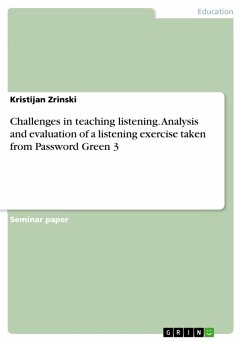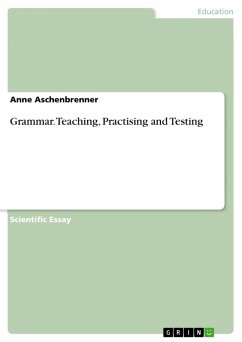Seminar paper from the year 2013 in the subject Didactics for the subject English - Pedagogy, Literature Studies, grade: 1,0, University of Frankfurt (Main), language: English, abstract: We are living in a new media age. Computers, DVDs, CDs and the internet including YouTube, wikis and other websites are a part of many people¿s everyday life. According to the Internet World Stats, about two billion people used the internet in 2012 with North America (78.6% of the population), Australia (67.6%) and Europe (63.2%) leading the way (Internet World Stats). Using New media is natural for the children of our society as they grow up with it. They live in a world where CDs, DVDs, computers and mobile phones are just given. When they first use the internet, they are on average about nine years old (Livingstone, Haddon et al., p.23). As it is so frequently used, it is no wonder that new media has also found its way into today's classrooms offering great possibilities of learning and communication to teachers and students. At the Johann Wolfgang Goethe University in Frankfurt in the winter session 2012/2013, a course was offered, called "New media in teaching semantics" by Professor Manfred Sailer. In this course, his students got to know different types of new media and how those could be used in teaching semantics. Furthermore, they designed online material for a semantics' introductory course and created an own wiki including podcasts, material for an interactive whiteboard and topic related explanations and tasks. At the moment, Professor Manfred Sailer is working on a book on semantics which is also used in the mentioned introductory course. In this paper, the chapter on "Predicate logic" will be analyzed. Therefore, it will be compared to other books on the same topic and evaluated from the viewpoint of a student having completed both mentioned courses. Furthermore, additional e-learning material will be created for the mentioned book chapter. The advantages of that will be explained.
Dieser Download kann aus rechtlichen Gründen nur mit Rechnungsadresse in A, B, BG, CY, CZ, D, DK, EW, E, FIN, F, GR, HR, H, IRL, I, LT, L, LR, M, NL, PL, P, R, S, SLO, SK ausgeliefert werden.









